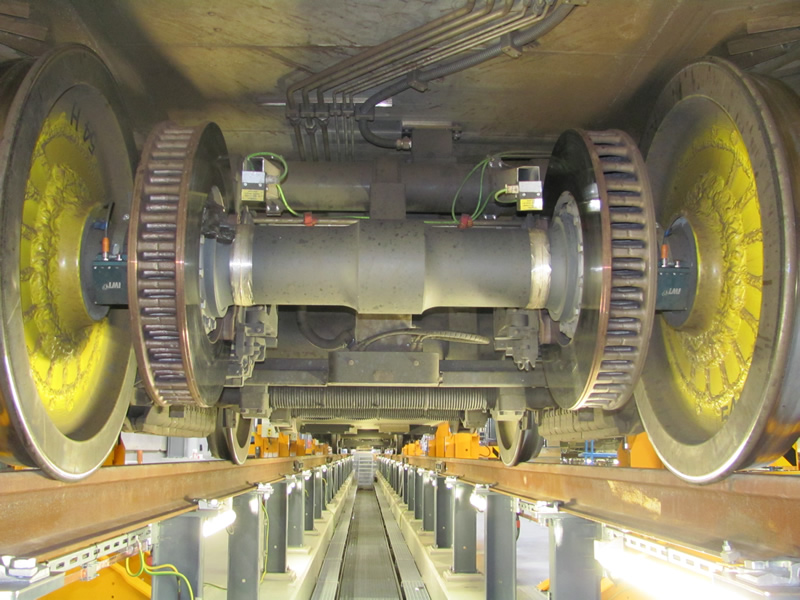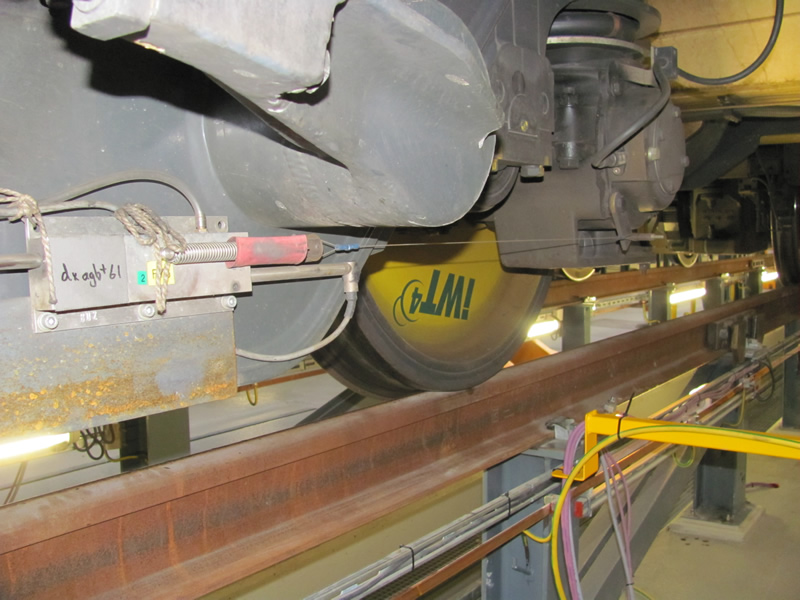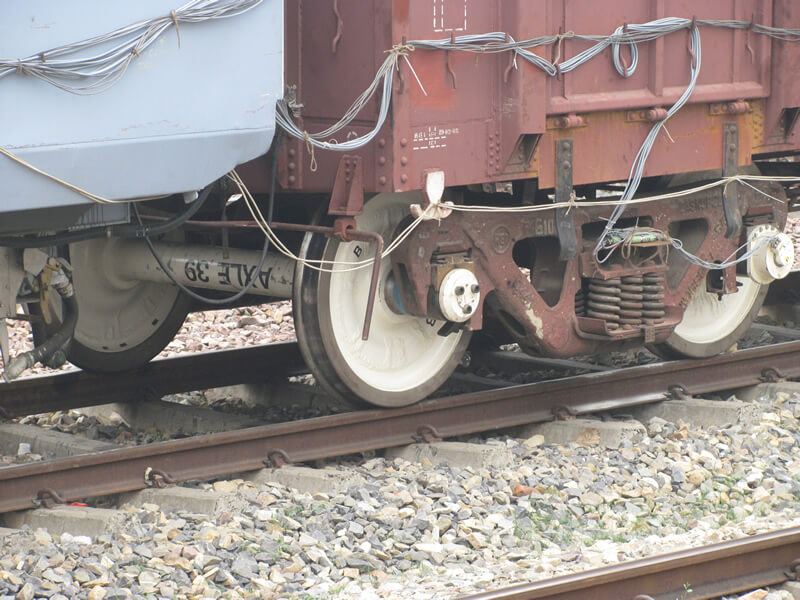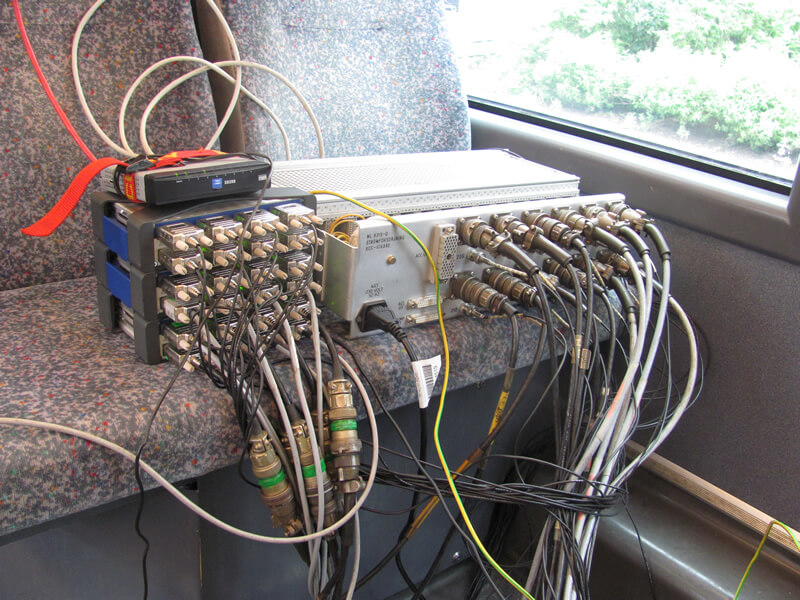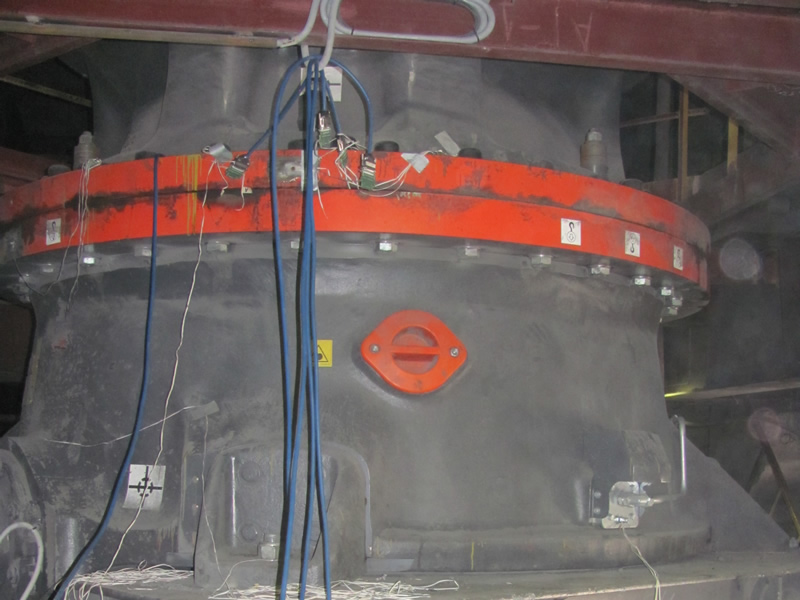This means that data acquisition is critical for Interfleet's traveling team of experts. If you have just spent three weeks testing the railways of Sweden, India or China, the last thing you want is to return to the field because something has been missed – for example how the train behaves on a particular gradient in a curve at a particular speed under certain weather conditions on a Siberian mountain. Interfleet produce their own measuring wheel with sensors, but they also rely on HBM data acquisition systems and software, which can handle large volumes of data and allow configurations to be changed quickly and easily in the field.
Swedish measuring wheels – making trains safer all over the world
Interfleet Technology, an international consultancy with a test center in Stockholm, are experts in the testing of railway vehicles – including statutory safety testing at the time of commissioning as well as troubleshooting running vehicles. Their task is to verify the running behavior – measuring all the parameters influencing the safety, the operation and, ultimately, the economics of these multi-million dollar vehicles. They have the challenge of acquiring and analyzing large volumes of measured data as efficiently and as correctly as possible, resulting in a thorough analysis of all the mechanical quantities affecting the train.
Pioneers in Measuring Wheels
In the 1950s, Interfleet was part of the engineering division of SJ (Swedish State Railways), and even back then it was already a pioneer in measuring technology in the railways. The Swedish test team were the first in the world to use a measuring wheel (IWT) for rail vehicles, and they have built upon this to become world leaders today.
Next-generation measuring wheels are now in use, able to handle frequencies of up to 3 kHz (IWT4). The measuring wheels are fitted with sensors based on the very latest technology – testing factors like speed and acceleration, power, displacement and strain, parameters such as track force and stability, or wear issues like strain in the bogie frame, grooves in the track or flexural stresses in the axles. Measuring wheels for the global market are manufactured in the Interfleet lab in Solna, near Stockholm.
Up to 170 Measuring Points
Survey assignments are commissioned by vehicle manufacturers and owners including Siemens, Alstom, Bombardier, LKAB, Vale and Indian Railways, and Interfleet's engineers respond to them with a global solution covering the entire measuring chain. Data acquisition equipment is installed on the train along with the custom-built measuring wheels.
The data acquisition system is the QuantumX or MGCplus from HBM, with acquisition nodes in each car. The system supports on-board data monitoring and classification in real time. A large-scale survey assignment can involve as many as 160-170 measuring points, with sensors distributed around the vehicle and several pairs of measuring wheels in the trainset. They communicate with the system via optical fiber, which is laid through the cars. In large assignments, the measuring equipment may occupy several pallets, whereas it can all fit in one case in a small assignment.
Full-scale type approval can be completed in two to three weeks of traveling around the rail network. "In order to obtain all the data combinations we need for a thorough analysis, several gigabytes of data are collected every day," explains Jan Wännman, surveying expert at Interfleet in Sweden.
"By classifying the data as soon as we collect it, we can be certain that we're getting everything we need. We work on the train, in constant touch with the driver, asking for different speeds or to increase or reduce the load, making sure we cover all the necessary conditions. When we finish, we then take the data from binary files in the HBM data acquisition program catman and analyze it using the advanced mathematical program Matlab on the basis of predefined criteria – this operation can take up to a week."
Confidence in the System
Following the weeks spent on the rails, the Interfleet team prepares all survey assignments back in the Solna test center. Setting up a new survey assignment takes careful planning.
"When we're out in the field there are so many parameters that can go wrong or that we can't control. This could be the wind and the weather, leaves on the track, or some other problem during the short window we have to complete the survey. We have more than enough uncertainty to cope with. That's why we really need to be confident that that data acquisition system will work – and the QuantumX and MGCplus from HBM have shown that they are reliable. They also make it easy to change the survey configuration if necessary by switching channels on and off, without the need to reprogram the entire setup. This scalability and flexibility is invaluable out in the field," says Jan Wännman.
